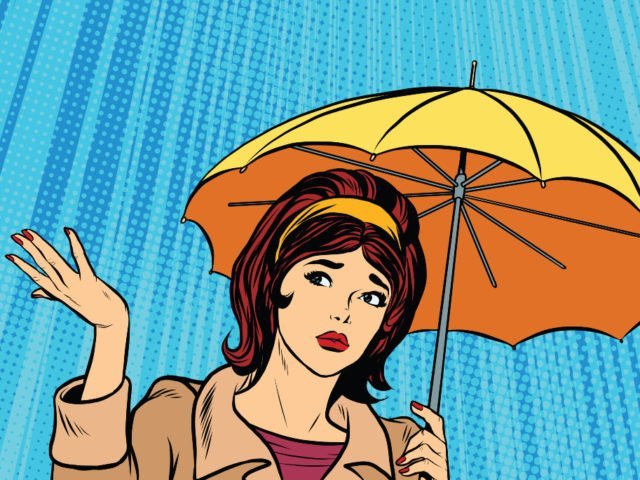Many authors began their love of storytelling by reading comics as children. Everything from The Beano and Marvel comics, to manga and graphic novels, all play a part in enriching the minds of the young and the young-at-heart.
And the best thing about comic books is that you don’t have to stop reading them once you grow up (in fact, many are written specifically for adults) but you can have a go at writing your own!
I began my fiction writing career as a fantasy author, yet some of the best fun I’ve had in my career has been seeing my characters come to life in a fantasy YA manga story I wrote for Big Bang! Manga. The process was eye-opening, and working with a talented team of illustrators and editors meant that it truly was a collaborative project.
In this article, I will be discussing how to write a comic book, everything you need to know before you start writing, and the best way to get your comic book published.
What Is A Comic Book?
A comic book is a story told using a series of illustrated pictures and panel descriptions. Unlike a novel, it includes very little writing, with most of the story presented in pictorial form as a series of sequential images.
Comic books can be about absolutely anything, the most popular genres include:
- Horror
- Paranormal
- Fantasy
- Sci-fi
- Traditional superhero genre (such as Marvel or DC comics)
- Romance
- Erotica
- Historical
The joy of comic books and graphic novels is that many have been turned into TV series and movies. Some of the most famous include:
- The Marvel franchise (Captain America, Black Panther, Spider Man, Incredible Hulk)
- DC Comics (Batman, The Joker, Birds of Prey, The Flash)
- The Walking Dead
- Lucifer
- Sandman
- Heartstopper
- The Boys
They can also be turned into video games and even novels.

How Is A Comic Book Different To Manga And Graphic Novels?
Although manga, comic books and graphic novels are all stories told in pictorial form with minimal writing, there are some points of differentiation.
Manga literally means ‘comic book’ in Japanese. Unlike the US comics where many are designed and drawn in the Marvel style and printed in colour, manga is printed in black and white and drawn in a distinct Japanese style.
It’s also worth noting that manga is not the same thing as anime.
Although both are equally important to Japanese culture and entertainment, manga refers only to Japanese comics, and anime refers to Japanese animation. Although many manga stories are turned into anime.
Graphic novels, on the other hand, can be illustrated in any style but are most commonly just the one story (unlike comics and manga that can include more than one story serialisation per edition). They are usually bound too, like a book, as opposed to stapled/stitched like a magazine.
Do You Need To Illustrate Your Own Comics?
The quick answer to this is no.
Many talented illustrators choose to also write their own comics, but if you are a great artist but not confident about your writing – or one of many comic book writers who struggle to draw – you’ll be pleased to hear that most comics are created as a collaborative project.
A comic book team can consist of anything between one to six people:
Writer: They come up with the initial story idea, the plot and characters, character arcs, and write the dialogue and story captions.
Artist: Brings the characters and writer’s words/worlds to life. Sometimes many different illustrators can share this role…
Penciller: Specialises in drawing the outlines of the character and their creation.
Inker: They create the style of the comic, giving it its distinct look.
Colourist: They add the colour.
Letterist: Create the lettering for the dialogue, captions and sound effects.
Sometimes one artist specialises in just the backgrounds and another in the characters. This all depends on how much budget the comic book creator has and how important the series is.
Editor: Usually the one who commissions the writer and artist, the person with the bigger vision for the story/series, who understands the audience best, and checks for inconsistencies and continuity issues.
How Many Pages And Panels Does A Comic Book Have?
An entire comic book can have between 32 to 48 pages, although the number of pages can vary as long as the pages are in multiples of four (for printing reasons, as they are folded down the middle). Although some comics may be made up of more than one story running concurrently, so the comic itself may be made up of 48 pages but that part of the story may only need to be 16 pages.
Each page is made up of panels that contain images depicting the story. Some pages may only have one picture, some may contain up to nine. The average is five and it’s best to vary it as you don’t want to crowd the page with too many images or bore the reader with repetition.
Where Do You Start?
When I first started writing comics I had no idea where to start – all I knew was that my editor loved my story idea and was confident that it would make a great magical fantasy story for teens.
I learned so much on my journey which I will be sharing with you all.
In this easy 10-step guide, I’ll be explaining all the different things you need to consider before you start writing – from coming up with ideas, to getting your comic book out in the world.
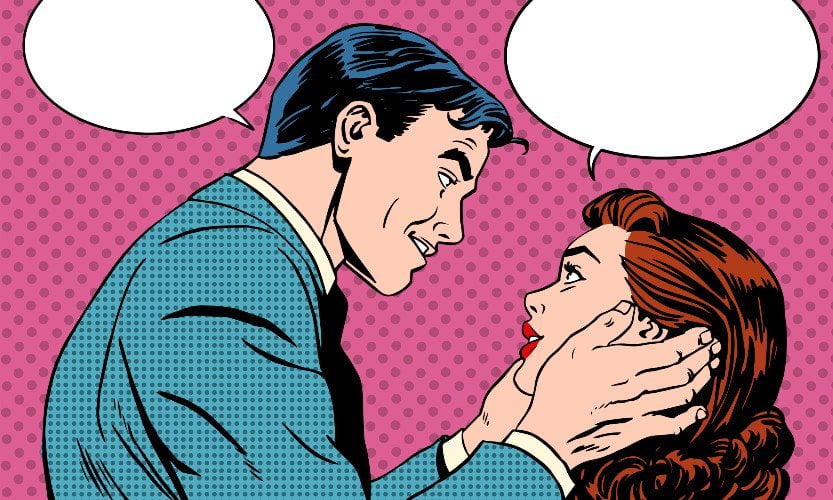
1. Learn The Language
You can’t start writing a comic book without understanding the terminology – especially if you’ll be working with an experienced illustrator and editor.
Here are a list of words that may crop up as you discuss your comic book with your team so that you’re all on the same page.
Panel
A panel is the space in which the picture (and dialogue) sits. A comic writer can request panels of any shape or size as long as it fits on a page: square, round, triangular, narrow vertical, shallow horizontal, diagonal, etc.
In many cases, the writer will suggest what must happen on that page and the illustrator will decide what kind of panels will work best. This may vary depending on the style and genre of the comic book.
Here’s a list of the different types of panels you may have in your comic:
- An inset is a panel contained within a larger panel.
- A bleed panel is when the artwork comes out of the frame, or “bleeds” off the edge of the page. This may be on one side or more and is often used for dramatic or ironic effect.
- A full-page panel is called a splash and takes up a full page – whether within a panel or bleeding out of the panel. These are normally for big scenes that either need to make a large impact or include a lot of detail.
- A giant splash panel covering two facing pages is called a double-page spread. Like the one above it is often used to really wow the readers.
Borders are lines (sometimes heavy and black, sometimes thinner) that surround the panel. If it’s a square panel it may look like a box. Sometimes the art can pop outside panel borders for a hint of drama. You can even have images with no borders and they still count as one panel.
Sometimes you may get an awkward panel, one that is different from the others or doesn’t quite fit in a space. It’s down to the illustrator to understand how much room they have to work with and interpret your story visually.
Lettering
Lettering refers to any text on the comic’s page. Most lettering is either used for:
- Dialogue (what the characters are saying)
- Captions (the author explaining what is happening, ie ‘ten minutes later’)
- Sound effects (BAM! WHOOSH! CRASH! etc)
You can also express how a character is speaking by the way the letters are drawn.
Bold lettering emphasises certain words, and large letters in dialogue represent shouting (and, likewise, small dialogue lettering can mean the characters are whispering).
Dialogue and caption lettering are traditionally all uppercase, although nowadays artists vary the way lettering is used and it can be less formulaic, with some creators using both upper and lowercase.
Display lettering includes sound effects and text that’s not inside a speech bubble or caption (ie license plates, a text message on a phone, road names etc.). Lettering and the placement of speech bubbles is crucial to the design of a comic book page.
Speech Bubbles/Word Balloons
A speech bubble or word balloon is normally a round shape containing dialogue, usually with a tail that points to the speaker.
Bubbles without a tail often represent “voice-over” or off-panel dialogue.
Much like panels, speech bubbles are drawn in various shapes, the most common being ovoid. Different shapes can be used to denote different characters or moods.
Although don’t confuse your readers by mixing up the bubble/balloon shapes too much. Best to stick to one style that represents what you are trying to convey and be consistent.
Thought Balloon
These are similar to speech bubbles except they represent what a character is thinking. Thought bubbles are almost always cloud-like in style with a ‘tail’ that looks like trails of bubbles. Don’t be tempted to have panel after panel of internal dialogue as comic books rely on action to keep the readers turning the pages.
Caption
This is a narration tool to move the story along (ie “Earlier that day…”), or off-panel dialogue. Captions are normally in rectangular borders, but they can also be borderless or floating letters.
Sound Effects (SFX)
Comic books are famous for their dramatic sound effects represented by stylised lettering (think retro Batman and his KAPOW! fight scenes).
Most sound effects are floating letters and are incorporated into the imagery. As I mentioned with the captions and thought bubbles, the overuse of sound effects is distracting. Only use them for specific sounds, such as large sounds like explosions and punches, or small sounds like a creepy door creaking shut or the sound of someone panting.
Borders
Borders are the lines that surround panels, speech and thought bubbles, and captions. Various styles and line weights can be used to reflect different effects or moods.
If the illustrator wants to depict anger or panic they may use a rough or jagged border; likewise thin, wavy borders represent weakness or spookiness; you can have “electric” speech marks and tails to show someone is speaking on the radio, TV, or telephone; and flashbacks can be shown by using rounded panel corners or uneven borders.
Gutter
The gutter is the space, usually white, between and around the panels. Some artists may use colour between the panels to denote a certain mood or flashback.
2. Get A Team Together
Now you know what you are talking about, it’s time to get your team together.
If you are working with a comic book editor they may have already matched you with an artist, if not it’s time to do some research. Before you attack that blank page look at other comic books in the genre in which you want to write and see who the artist is. Or check out the portfolio of illustrators on social media.
Many illustrators would be excited and flattered that you have picked them to work with you, but remember they expect to be paid a fair fee and they may also ask about your credentials and story ideas before they choose to work with you.
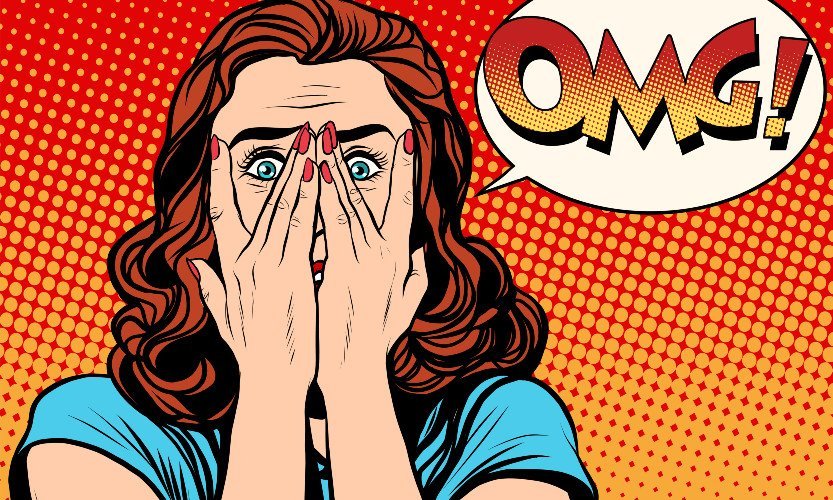
3. Come Up With Great Story Ideas
This leads me on to the most important aspect of writing a comic book; the big idea. If you don’t have an original concept, then it’s going to be a lot harder to sell your work!
Remember that readers expect the same thing from a comic script that they do from a traditional book, movie, or play.
A comic book story structure is normally based on the traditional three-act structure – a clear beginning, middle, and end. Your audience will also expect a subplot, character development; precise, carefully considered dialogue and narration; and a theme (especially if you choose to create a superhero comic).
Think about a plot outline based on the genre you are writing. Look at what people enjoy, but keep your story original too. Readers expect certain archetypes and tropes depending on the genre. The superhero normally wins and defeats evil, the wise sage teaches the young hero, and the boy gets the girl (or gets the boy, or simply learns to love himself).
Sometimes it’s fun to twist up archetypes and tropes. Look at what The Boys did to the general depiction of the superhero genre.
4. Think Visually (And Long Term)
It is absolutely vital that your story is visual. Visual storytelling means that your story can be told with as few words as possible.
A traditional book could easily centre around the thoughts of someone pontificating on their couch all day, but that would make a very boring comic (and the artist wouldn’t want to draw hundreds of identical panels all day).
So think about what the characters do, what the world you are building looks like, the expressions on the characters’ faces, and how you transition from scene to scene.
5. Develop The Characters
Talking of character development, it’s really important you know your main character inside out. When I was writing my manga I wrote an entire backstory about each character (including secondary characters) so that when it came to briefing the artist they really got a feel for what they looked like.
Think about the character arc too. Your main character should be very different at the beginning of the story than they are at the end (think Spider Man going from weedy school kid to fighting crime).
6. Write The Script Pages
Next, you need to write the script. A complete script consists of a story layout per page, broken down by panels. The artist may decide how many panels they need, but as a writer, it’s good to bear in mind where the dialogue goes, where captions go, and which panels can be just images.
You may also want to add notes for the artist (such as ‘the woods get darker with each step’ etc).
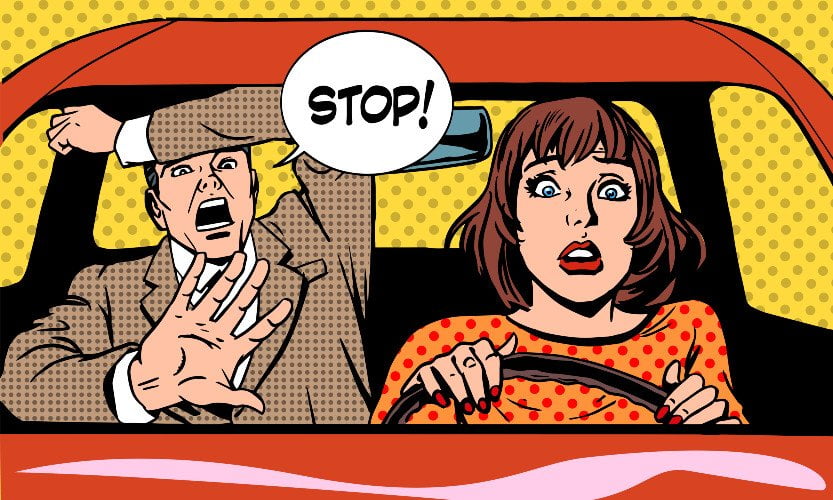
7. Make Dialogue Realistic
Writing a comic book script isn’t as easy as you may think. Dialogue is so sparse that it’s really really important you are succinct, precise and realistic as possible. Remember that many things can be conveyed simply by facial expressions, actions or a quick caption.
8. Brief The Illustrator
If you are creating the artwork for your own comic book then you can skip this stage, but for those of us who don’t draw (or, in my case, DO draw but not in the style required) you will be working with a comic book artist.
Artists need to be totally in sync with the writer so that whatever images live inside the storyteller’s head come to life on the page thanks to the artist.
So make sure to send them sample script pages before you start, along with a very clear idea of what you are looking for. When I wrote my manga, set in a London council estate, I sent the Indonesian artist lots of reference photos (and had to explain that Big Ben would not be visible in the background).
I also created mood boards per character, found photos of how I imagined them to look, and went back and forth with the editor and artist until the characters matched what I saw in my head.
9. Review Panel Descriptions
It will take many drafts of the comic to get it right, and most writers work with their editor until each page is perfect before the artist begins to draw. The lettering is usually left until last so that once the images are in place the writer can tweak the dialogue to fit the frame.
10. Get Your Work Out There
When everyone is happy with the comic, you’re done. Hurray!
Except now you have to find your readers. If you are commissioned by an editor then you’re good to go, but if you are an independent creator it’s time to think about distribution.
Who Publishes Comic Books?
Very few comic book publishers accept unsolicited submissions. Make a list of comic book and graphic novel publishers who publish work similar to yours, or research authors and publishers that would make great comparisons for your work.
Although Marvel and DC are at the top of most comic book creator’s dream list, it is very rare for first-timers to get picked up by the big guys. So approach independent and smaller presses and work your way up.
Before you submit samples of your work to publishing houses, ensure you first read their submission guidelines. Visit their website and see if they accept unsolicited submissions, (meaning you send them the work even if they haven’t requested it or you don’t have an agent).
If you need an agent then research which are on the lookout for work like yours. In both cases, remember to make your covering letter short and professional and to include artistic samples along with the story.
Do It Yourself
Many comic book creators have had success starting out on their own.
Alice Oseman crowdfunded her Heartstopper online webcomic, it was bought out by top publisher Hatchette and turned into a graphic novel, and has gone on to be a huge hit on Netflix.
Why not start your own free webcomic to build your readership base, offering each instalment via a newsletter? Or use your webcomic to expand on the stories or characters in the book, enticing viewers to buy the “real thing” (a comic book you can print and distribute yourself via your website or sites such as Etsy or Amazon).
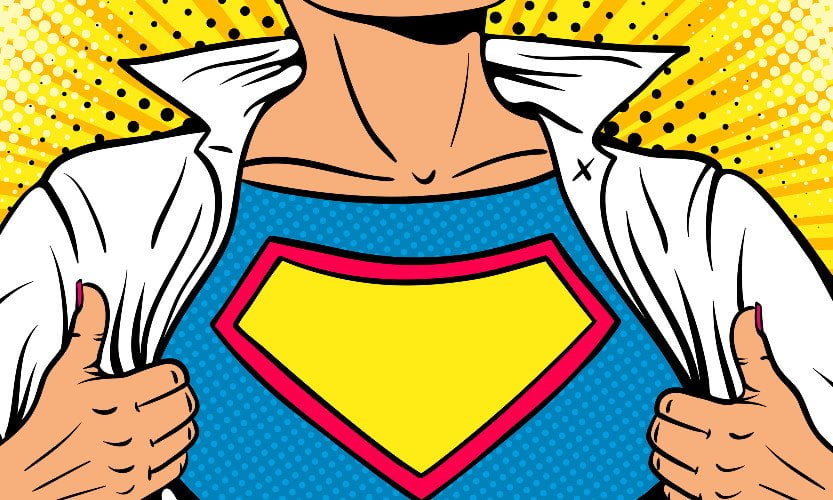
Frequently Asked Questions
How Much Money Does A Comic Book Writer Make?
Like any kind of writing job, payment can vary. If you are self-publishing your comic book you may not receive anything until your series picks up and you create a decent following.
The median salary of comic book writers and artists is $36,500-$42,000. Although many earn per page or receive an advance per comic/project.
Needless to say the more proficient and successful you are, the more you can earn. So keep going!
How Many Pages Should A Comic Book Be?
The number of pages in a comic book can vary from 32-48, although each story within the comic may be as short as 16, and a graphic novel may be longer. It’s important to remember that manga and comic book pages must always be divisible by four because of the way they are printed, folded and stitched.
Make A Splash In The Comic Book World!
Now you know all you need to create your first comic book, it’s time to put pen to paper and get your team together.
But it’s important to remember that most comic book creators started off right at the bottom; very few people land their first comic book writing gig at DC or Marvel. So focus on getting to know the industry, building your audience, and writing/creating as many stories as you can.
Who knows? Your idea may one day not only be someone’s favourite comic book series but may also be their favourite TV series too!
Jericho Writers is a global membership group for writers, providing everything you need to get published. Keep up with our news, membership offers, and updates by signing up to our newsletter. For more writing articles, take a look at our blog page.



